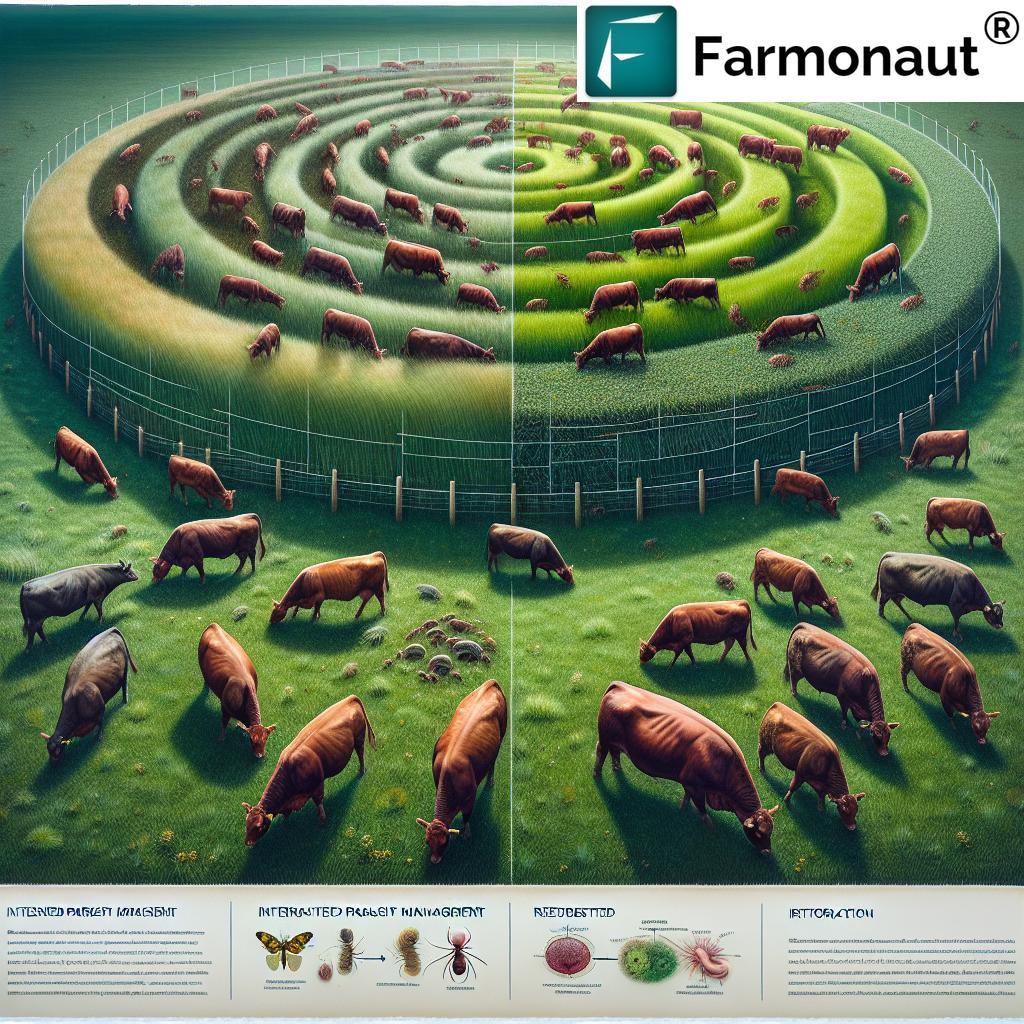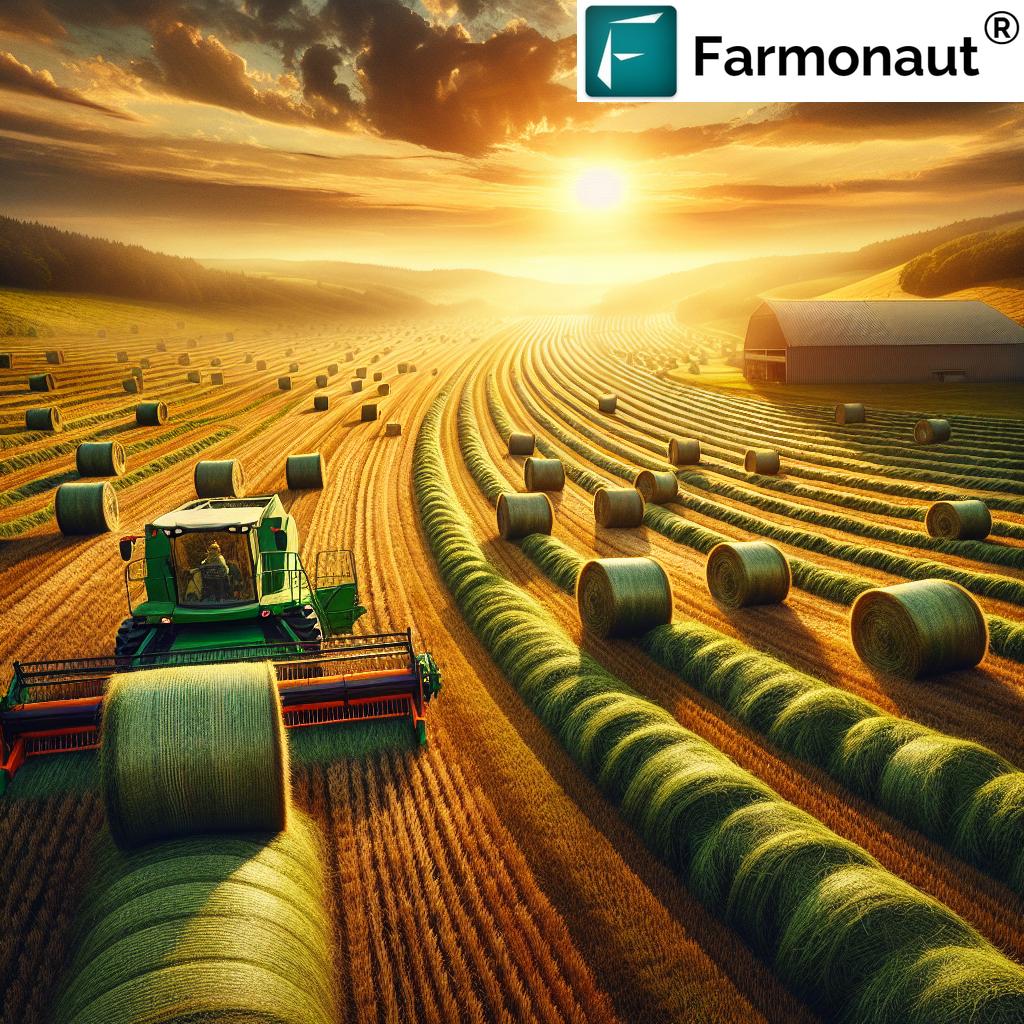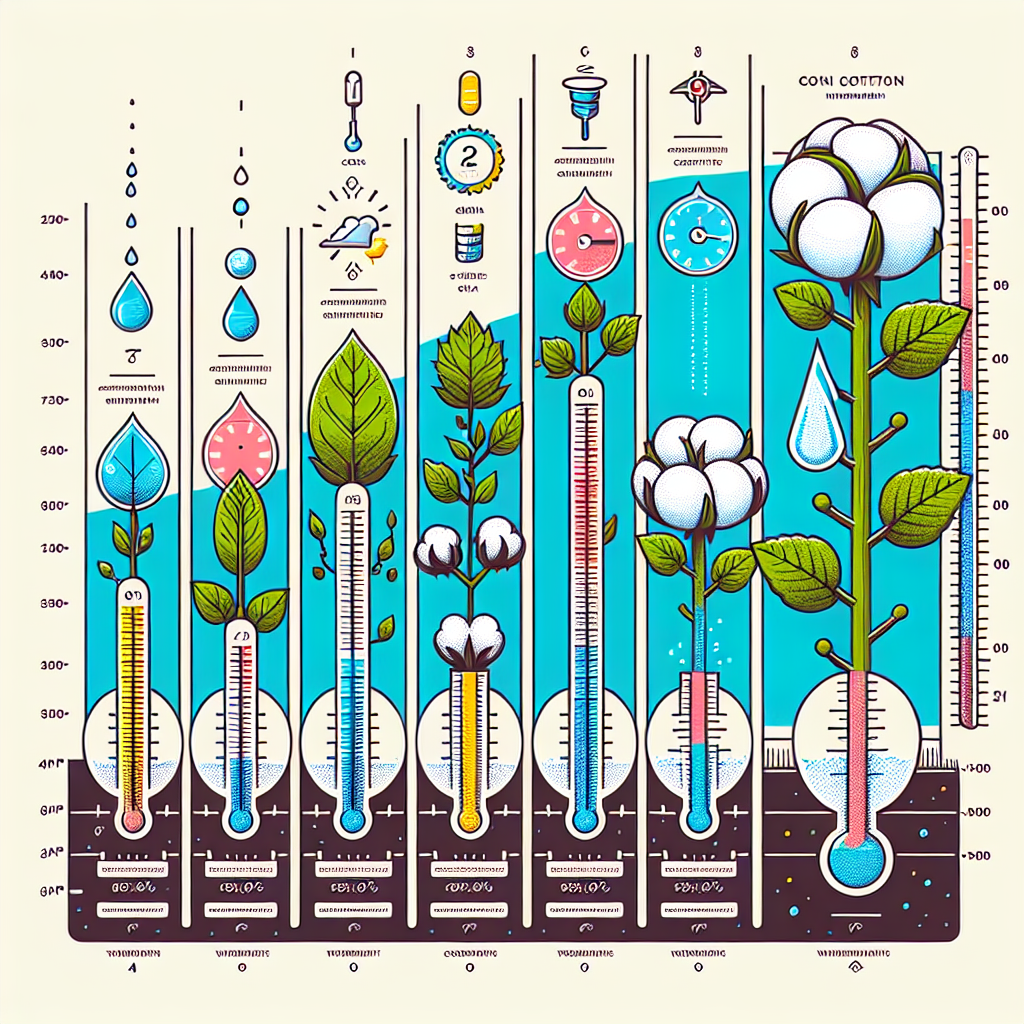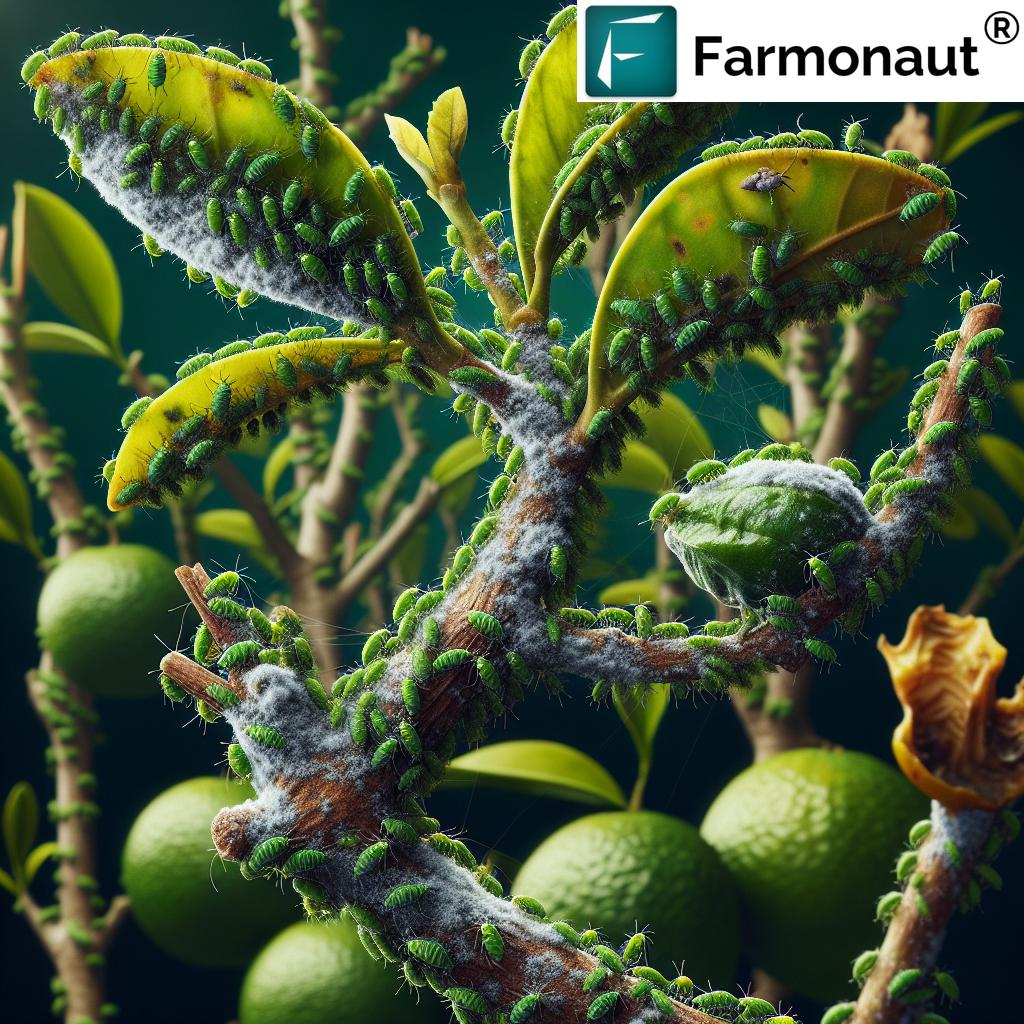Earthworm Compost: Red Earthworm Castings & Fertilizer – Transforming Soil Health and Sustainable Agriculture in 2025 & Beyond
- Introduction
- Understanding Earthworm Composting & Vermicomposting
- The Role of Red Earthworm (Eisenia fetida) in Vermiculture
- How the Vermicomposting Process Works
- Earthworm Castings: The Ultimate Natural Fertilizer
- Comparative Benefits: Earthworm Compost vs. Conventional Fertilizer
- Vermicompost Application in Sustainable Farming Practices
- Earthworm Composting for Forestry & Land Restoration
- Implementing Vermiculture Systems in 2025
- How to Buy Earthworms and Start Vermiculture
- Farmonaut Satellite Solutions: Supporting Sustainable Agriculture
- FAQs: Earthworm Compost, Red Earthworm Castings & Fertilizer
- Conclusion & Next Steps
“Red earthworms can convert organic waste into nutrient-rich compost, producing up to 4.5 kg of castings per worm annually.”
Introduction: The Earthworm Revolution in Modern Sustainable Agriculture
Earthworm compost – also popularly known as vermicompost – is taking center stage as we move toward a more ecologically balanced, productive, and sustainable form of agriculture in 2025 and beyond. With growing concerns about soil degradation, climate change, and how to feed a burgeoning global population, natural solutions like earthworm fertilizer are more relevant than ever.
The red earthworm, specifically Eisenia fetida, is the unsung hero at the heart of the vermicomposting process. By consuming vast amounts of organic matter, these worms generate earthworm castings—an all-natural fertilizer brimming with essential nutrients and beneficial microbes. For farmers aiming for higher yields and soil vitality, for land managers focused on environmental restoration, and for anyone invested in sustainable practices, integrating earthworm compost stands as a pivotal method.
This comprehensive guide explores the science, methods, and emerging best practices of using earthworm compost in agriculture, forestry, and land management, including how new technologies are enhancing the efficiency and accessibility for everyone in 2026 and the years ahead.
Understanding Earthworm Composting & Vermicomposting
Earthworm composting, or vermicomposting, refers to the process by which earthworms break down organic waste (like crop residues, manure, and food scraps) into highly nutrient-dense castings known as vermicast. As sustainable agriculture gains momentum in recent years, this method is emerging as pivotal for enhancing soil health and boosting crop productivity in a natural, eco-friendly way.
The action of earthworms speeds up the decomposing of material far beyond what is possible via traditional composting. Through their unique biology, earthworms physically and chemically process organic matter, transforming it into a fine-textured, odorless, nutrient-loaded fertilizer.
- Key Benefits:
- Speeds up organic waste management and nutrient cycling.
- Produces a potent, slow-release fertilizer suitable for organic and commercial farming.
- Promotes microbial activity and improves soil structure.
- Reduces environmental issues—less landfill waste, reduced chemical pollution, and improved land vitality.
In 2025 and beyond, the adoption of earthworm compost is expected to dramatically improve how we approach sustainable practices across agriculture, forestry, and urban environments.
The Role of Red Earthworm (Eisenia fetida) in Vermiculture
The red earthworm (Eisenia fetida) has become the gold standard in vermiculture worldwide due to several unique attributes:
- High Reproduction Rates: Red earthworms reproduce rapidly, ensuring population stability and composting efficiency.
- Tolerance to Varying Conditions: They adapt well to changing moisture levels, temperature fluctuations, and wide ranges of organic material.
- Large Consumption of Organic Matter: Each worm can process significant amounts of food scraps, residues, and manure daily.
- High Quality Castings: Their castings or vermicast are renowned for their elevated nutrient concentrations and plant-growth-promoting substances.
For those looking to buy earthworms or search for earthworms for sale near me in 2026, choosing red earthworms is crucial. They’re ideal for both small-scale home systems and large commercial setups.
How the Vermicomposting Process Works
The process of bringing organic matter full circle—from waste to fertilizer—with the help of earthworms is surprisingly simple and deeply effective.
Key Steps in Vermicomposting:
- Preparation of the Composting Site: Select or build a container (bed, pit, or bin) with proper drainage and aeration. Raised beds are popular for their easy handling and pest control. Temperature and moisture must be monitored for optimal worm activity.
- Substrate Placement: Add a bedding layer: partially decomposed organic residues or manure, straw, shredded cardboard, or coco-coir to retain moisture and provide initial sustenance.
- Introduction of Red Earthworms: Place purchased red earthworms into the bedding. Start with an adequate population—ask your supplier when you buy earthworms locally for the right starter count.
- Feeding and Maintenance: Regularly add organic matter (food scraps, crop residues). Maintain moisture at around 60-80% (damp but not soggy). Track temperature (ideally 18–28°C or 65–82°F).
- Harvesting Compost: After 45–90 days (depending on system size, feedstock, and worm population), dark, crumbly castings accumulate. Separate worms (for reuse or expansion) and collect the rich vermicast fertilizer.
Proper management of these systems involves avoiding excess acidity (balance with crushed eggshells or lime), keeping the environment moist but not waterlogged, and ensuring sufficient organic feedstock inputs year-round.
Earthworm Castings: The Ultimate Natural Fertilizer
The product of this entire process—earthworm castings or vermicast—represents one of the most potent and valuable fertilizers available to farmers and gardeners:
-
Rich in Macro and Micronutrients:
Earthworm castings are loaded with essential nitrogen, phosphorus, potassium (the primary N-P-K trio), as well as calcium, magnesium, iron, copper, zinc, and more. Bioavailable forms make these far more accessible to plant roots compared to many synthetic options. -
Enhances Soil Structure:
Worm castings bind soil particles into stable, porous aggregates, improving aeration, water retention, and root penetration—key indicators of soil health and long-term productivity. -
Boosts Microbial Activity:
The microbial load in castings is immense, teeming with beneficial bacteria, fungi, actinomycetes, and enzymes that drive natural nutrient cycles and suppress plant disease organisms. -
Slow & Sustainable Nutrient Release:
Unlike synthetic fertilizers, which can cause run-off and leaching, vermicast releases nutrients gradually for consistent, season-long plant support—helping to control pollution and reduce environmental impact. -
Improves Resistance to Pests and Diseases:
Plants grown in vermicast-amended soils tend to have stronger immune response, better root systems, and enhanced resilience to pests and pathogens.
“Earthworm fertilizer increases crop yields by up to 25% while improving soil carbon by 22% in sustainable farming systems.”
Comparative Benefits: Earthworm Compost vs Conventional Fertilizer
| Feature | Earthworm Compost (Red Earthworm Castings) | Conventional Fertilizer |
|---|---|---|
| Soil Health | Improves soil structure, microbial activity, organic carbon by 22% | May reduce soil organic matter and microbial diversity over time |
| Nutrient Content | High in NPK, Ca, Mg, plus micronutrients in bioavailable form | Usually high on major NPK but fewer trace elements & poor bioavailability |
| Crop Yield | Increases yields by up to 25% (Field Trials, 2021–2025) | Yields may increase initially, but often decline due to soil degradation |
| Soil Structure Improvement | Promotes aggregate stability, better aeration & water movement | Limited direct impact; repeated use can sometimes harm soil structure |
| Water Retention | Significantly enhances water holding capacity (ideal for drought-prone areas) | No improvement—may lead to run-off & erosion |
| Environmental Impact | Zero chemical additives; reduces pollution and leaching risks | Often contributes to waterway pollution, greenhouse gases, & soil acidification |
| Sustainability | 100% sustainable, renewable, and supports restoration of land | Relies on finite resources, more intensive energy and water use |
| Cost Efficiency | Reduces costs by recycling on-farm waste; lowers input purchases | Dependence on recurring purchases; subject to price volatility |
| Pest & Disease Resistance | Boosts plant immunity and resistance to pests | No inherent protective effect |
Vermicompost Application in Sustainable Farming Practices
The implementation of vermicomposting is revolutionizing sustainable agriculture in 2025 and beyond, empowering farmers to improve soil health, reduce waste, and boost crop productivity without degrading the environment.
Key Uses in Farming:
- Soil Amendment: Incorporate earthworm castings before planting, or side-dress existing crops for enhanced fertility.
- Potted Plants & Nurseries: Use as top dressing or potting mix for rapid root growth, improved seedling vigor, and pest suppression.
- Compost Tea: Steep castings in water to create a nutrient leachate—an organic liquid fertilizer for foliar feeding or soil drenching.
- Field Crops: Large-scale farms use tonnage per hectare as a partial or complete replacement for chemical fertilizers.
- Organic Farming: Essential in certified organic systems where synthetic inputs are banned or restricted, and soil health is the top priority.
The slow, sustainable release of nutrients ensures hungry crops like tomatoes, wheat, and maize receive season-long nutrition. Root crops, fruit trees, and high-value horticulture also thrive with vermicast amendment.
Earthworm Composting for Forestry & Land Restoration
The ecological benefits of earthworm compost move far beyond crop fields.
In forestry and land restoration projects, vermicomposting helps rebuild soil vitality on lands damaged by deforestation, overuse, or industrial activities (mining, construction, etc.).
- Restoring Soil Fertility: Castings foster rapid root establishment and microbial colonization on eroded or depleted soils.
- Reforestation Initiatives: Young saplings enjoy higher survival and faster growth rates with soil pretreated with earthworm fertilizer.
- Bio-remediation: Earthworm compost helps bind and neutralize soil pollutants, kickstarting soil revitalization.
- Erosion Control: Enhanced soil aggregation and water retention combat further land degradation.
Earthworm castings are increasingly featured in global restoration strategies, especially in the face of climate change and intensifying land pressures.
Implementing Vermiculture Systems in 2025
With innovations now available in 2025 and 2026, starting and scaling a vermiculture setup is more accessible for farmers at any scale:
- Automated Moisture Control: Smart sensors and irrigation lines maintain optimum moisture for continuous worm activity.
- Temperature Regulation: Thermostatic controls and insulation guard the process from environmental extremes, allowing year-round casting production.
- Worm Feeding Automation: Timed food additions ensure steady digestion and maximize efficiency while minimizing labor costs.
- Waste-to-Wealth Models: Community-level systems accept local waste (market scraps, domestic kitchen waste) and generate vermicast for farmers, gardens, and local authorities.
When buying earthworms or searching for earthworms for sale near me, source locally and from reputable vendors. Healthy, active red earthworms are critical for a robust, productive vermiculture system.
How to Buy Earthworms & Start Vermiculture
Where to Get Red Earthworms in 2026?
- Visit local agricultural extension offices or ask at organic farms—many maintain starter stocks and might offer worms for sale, or direct you to reputable suppliers.
- Search for online resources using the phrase “earthworms for sale near me” for local suppliers—avoiding long-distance shipping ensures healthier populations.
- Look for suppliers who guarantee healthy, disease-free red earthworms, provide care guidelines, and can recommend correct starter numbers for your system’s scale.
Pro Tip: When you buy earthworms, request varieties proven for your region’s climate and compatible with your organic waste availability.
Setting up your first bin? See Farmonaut’s Agri Advisory App for practical tips on crop management, soil improvement, and sustainable inputs like vermicast application.
Farmonaut Satellite Solutions: Supporting Sustainable Agriculture
As agriculture integrates advanced tools for sustainable management in 2026, Farmonaut stands poised to empower farmers, managers, and policymakers with cutting-edge support systems that complement practices like earthworm composting:
- Satellite-Based Monitoring: Through real-time, multispectral satellite images, Farmonaut’s platform delivers precise data on soil conditions, crop health (NDVI), and field variability—enabling prompt interventions, targeted use of organic fertilizers like vermicast, and reducing resource waste.
- AI & Advisory Systems: Jeevn AI offers growers tailored strategies for land management—from crop selection to soil health optimization and climate-adaptive practices.
- Blockchain Traceability: Our Product Traceability Solutions help verify supply chain integrity, ensuring your farm outputs—grown with earthworm fertilizer—are proven authentic, boosting consumer trust (especially for exports and premium local sales).
- Environmental Impact Tracking: With Farmonaut’s Carbon Footprinting tools, it’s never been easier for farmers and land managers to quantify carbon sequestration, emissions reductions, or soil carbon improvement achieved by adopting vermicomposting and similar sustainable practices.
- Large Scale Farm & Plantation Management: Farmonaut Large Scale Farm Management is designed to help commercial farms monitor, analyze, and optimize agricultural operations, bringing together agronomic data, logbooks, and analytics into one powerful app.
- Fleet Resource Management: Fleet Management solutions ensure all farm equipment and vehicles are used efficiently, helping reduce carbon emissions and operational wastage.
- Crop Loan & Insurance: Our crop loan and insurance verification services leverage satellite data for transparent assessments, helping you access funding for transitions like installing a new vermiculture or composting facility.
- API Tools: Developers and agri-tech companies can also integrate Farmonaut’s insights and analytics into custom enterprise solutions via our API Endpoints and comprehensive Developer Docs.
All these tools are accessible via Android, iOS, and Web—just download our latest app for seamless, in-field monitoring and instant insights!
Farmonaut Subscriptions: Start Your Digital Agriculture Journey!
FAQs: Earthworm Compost, Red Earthworm Castings & Fertilizer
What is earthworm compost?
Earthworm compost, also called vermicompost, is a nutrient-rich organic fertilizer produced by earthworms digesting organic waste like crop residues, manure, and food scraps. The end product—earthworm castings—greatly enhances soil health, plant growth, and disease resistance.
Why is the red earthworm (Eisenia fetida) preferred for vermicomposting?
Red earthworms are preferred for their high tolerance to varying environmental conditions, rapid reproduction, and superior capacity to break down large amounts of organic matter efficiently. Their castings are especially high in plant-available nutrients.
How does vermicomposting improve soil structure?
Earthworm castings bind soil particles, increase porosity, improve aeration, and greatly enhance the soil’s water retention capacity—making soil more fertile and resilient.
Is earthworm fertilizer suitable for organic farming?
Absolutely. Earthworm fertilizer is 100% natural, free from chemicals, and approved for use in organic farming worldwide—helping maintain compliance with certified organic standards.
How do I find earthworms for sale near me?
Check with local agricultural supply stores, organic farms, or use online directories and search for “earthworms for sale near me.” Sourcing earthworms locally is best for system health and carbon footprint reduction.
Can I use earthworm compost in forestry or land restoration?
Yes! Vermicast can jumpstart ecological restoration efforts by improving soil structure, boosting microbial populations, and accelerating plant establishment—especially on degraded or nutrient-poor lands.
Are there new technologies to make vermiculture easier in 2025 and 2026?
Yes, emerging solutions like automated moisture and feeding systems, temperature controls, and digital monitoring platforms are making vermiculture easier, more reliable, and scalable for everyone from homesteaders to commercial farmers.
What are the environmental benefits of earthworm compost compared to conventional fertilizers?
Earthworm compost avoids chemical pollution, supports soil biodiversity, locks carbon in the soil, reduces runoff, and recycles organic waste. In contrast, chemical fertilizers can promote soil degradation, water pollution, and depend on non-renewable resources.
Conclusion & Next Steps: A Greener, More Productive Future with Earthworm Compost
As we journey through 2025 into 2026 and beyond, the integration of earthworm compost and earthworm fertilizer represents a cornerstone of modern sustainable agriculture. The red earthworm (Eisenia fetida) acts as nature’s powerful decomposer, transforming waste into a nutrient-packed resource that revives soil, boosts yields, and increases crop resistance to pests and environmental stress.
By choosing vermicomposting and earthworm castings, farmers and land managers invest in a resilient food system and a healthy planet. The ecological, economic, and agronomic benefits span smaller farms to industrial operations, sustainable city gardens to massive reforestation projects.
Those looking to buy earthworms, to find earthworms for sale near me, or to embark on the journey of organic waste management, are joining a global movement towards sustainable, productive, and restorative land management practices.
Explore Farmonaut’s digital tools and satellite-driven insights to further amplify your sustainability journey, monitor your fields, and scale your composting and regenerative agriculture models with actionable intelligence.
- Download our latest app (Web, Android, iOS) for in-field soil and crop monitoring.
- For developers and tech-enabled operations, access our API endpoints and Developer Documentation.
- Learn more about carbon footprinting, supply chain traceability, and crop loan and insurance monitoring—all critical as sustainability standards rise in modern agriculture.
Let’s nurture a future where healthy soil, thriving crops, and circular systems are the global norm—powered by earthworm compost and regenerative agricultural practices.












